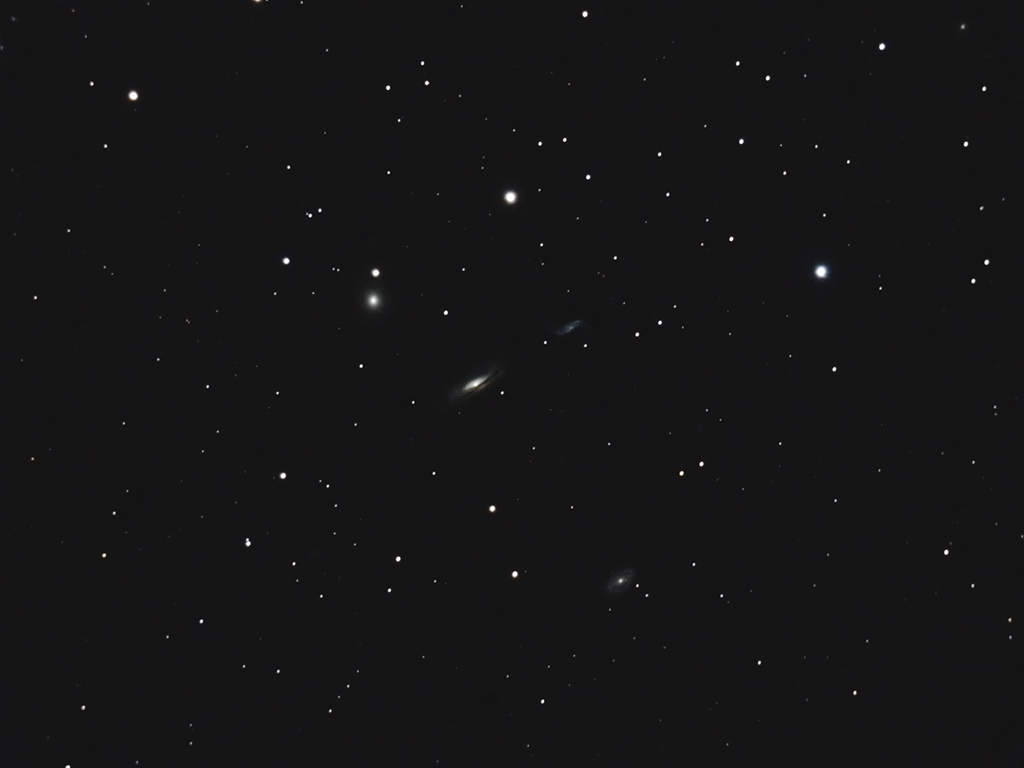
Telescope: Meade 12” LX850 ACF @ f/8, Orion Atlas EQ-G
Camera: Baader modified Nikon 610
Filter: High Point 2” IR Blocking Filter
Guide scope: Astro-Tech 60mm, ASI290MM Mini, PHD2
Exposure: 11x120sec, ISO 200, saved as FITS
Darks: Internal (Long Exposure Noise Reduction On)
Flats: 32×1/2sec, Tee shirt flats taken at dusk
Average Light Pollution: Red zone, Bortle 8, poor transparency, haze
Lensed Sky Quality Meter: 18.3 mag/arc-sec^2
Stacking: Mean with a 2-sigma clip.
White Balance: Nebulosity Automatic
Software: Backyard Nikon, Deep Sky Stacker, Photoshop
At the center of this image is four galaxies that comprise the Hickson 44 Compact Galaxy Group located just north of the beautiful binary star Algieba in Leo. From left to right these NGC 3193, NGC 3190, NGC 3187, and NGC 8185. Of these NGC 3193 is an elliptical and the others are spirals. NGC 3187 is a barred spiral with a highly warped disk. Paul Hickson cataloged 100 compact galaxy groups, most of which form interacting groups with local concentrations of dark matter.
The Hickson 44 compact galaxy group is currently well placed high in the east as the sky darkens. (Photo credit; John Graham, 3/29/2021)
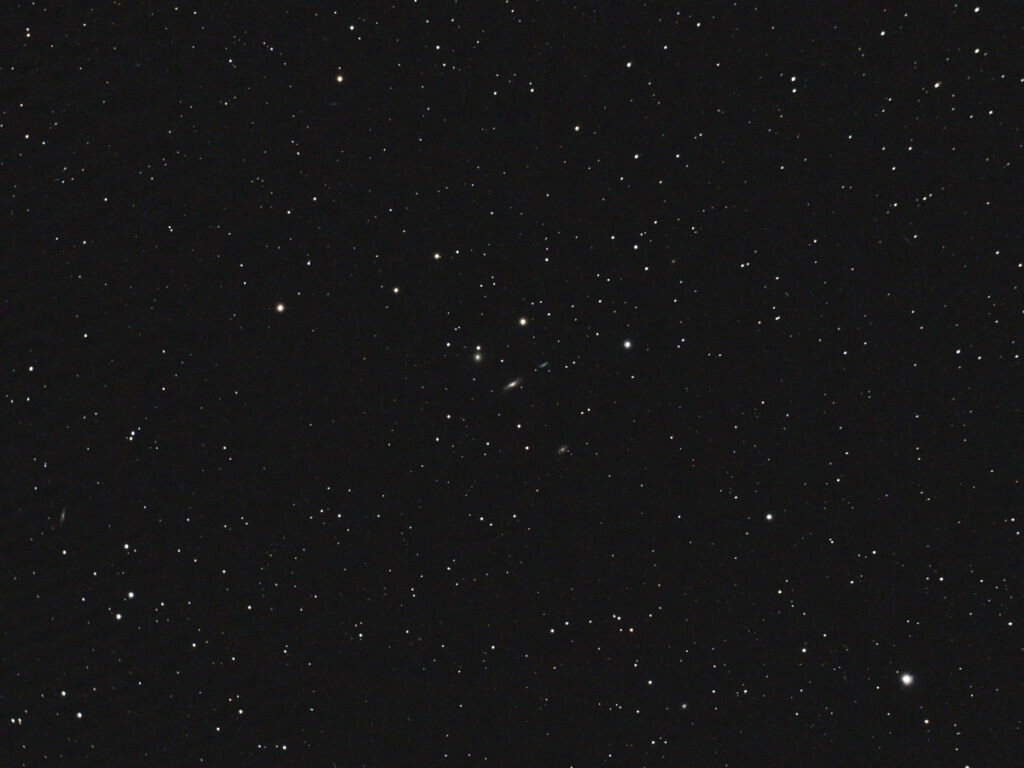
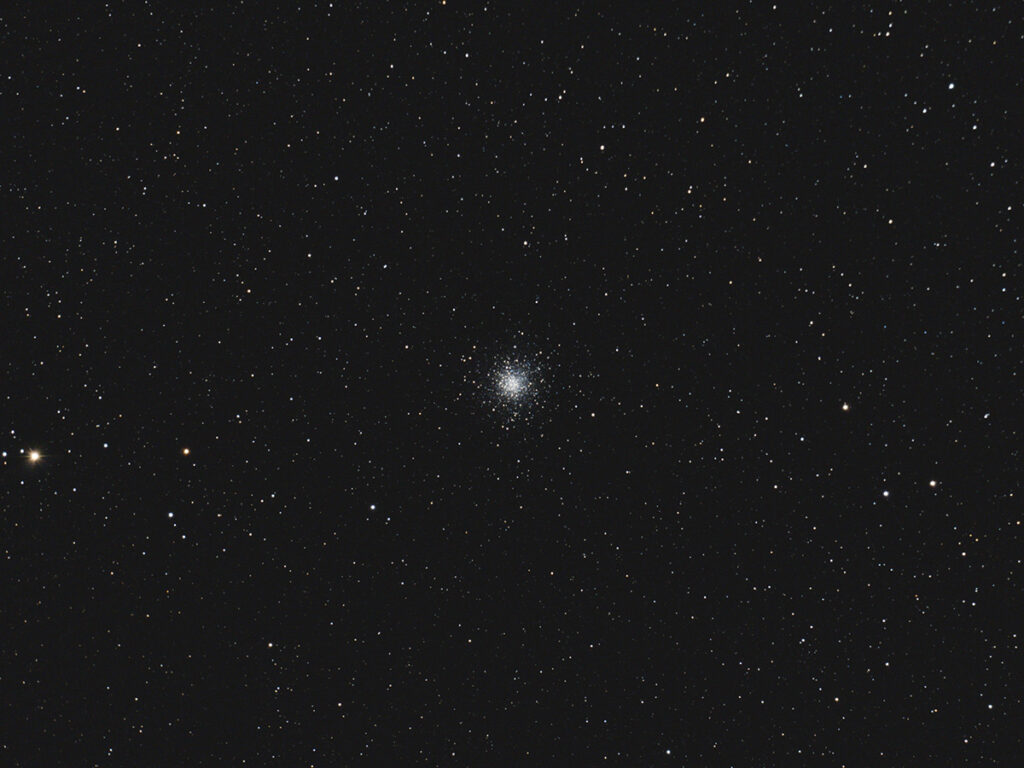

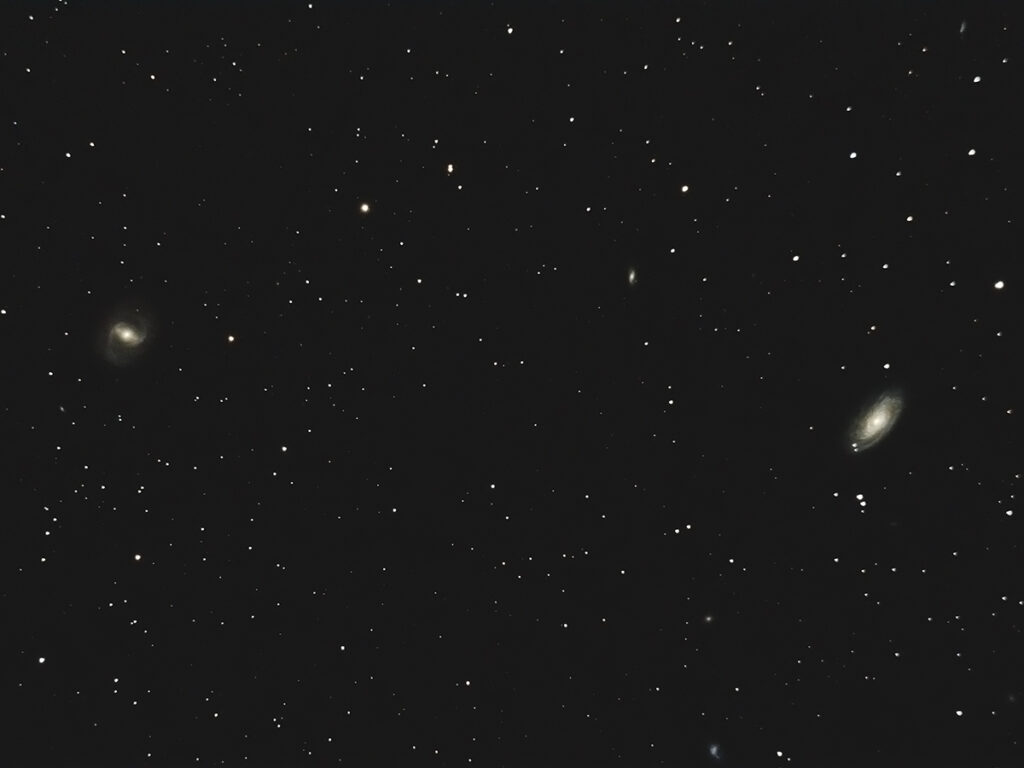
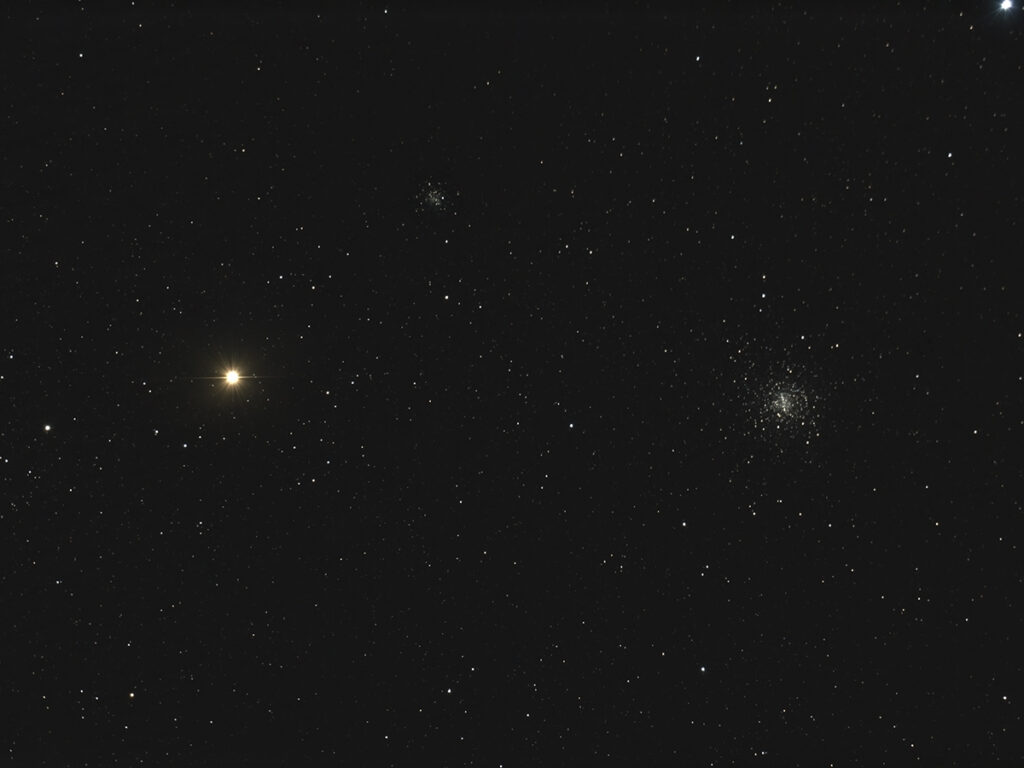
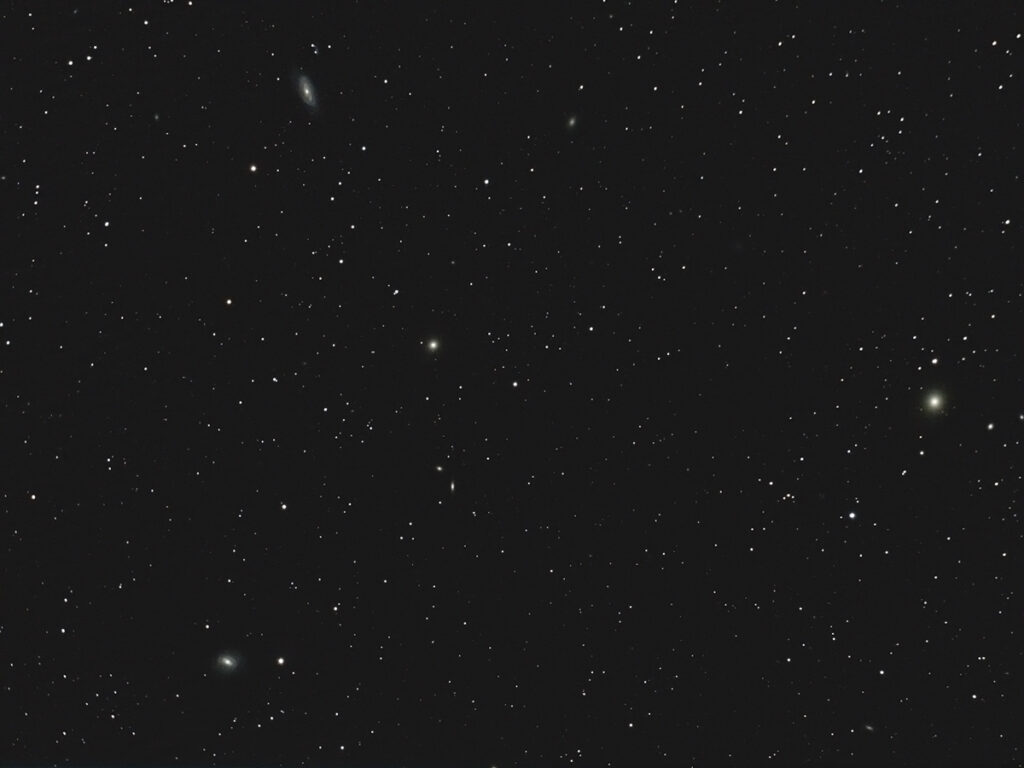
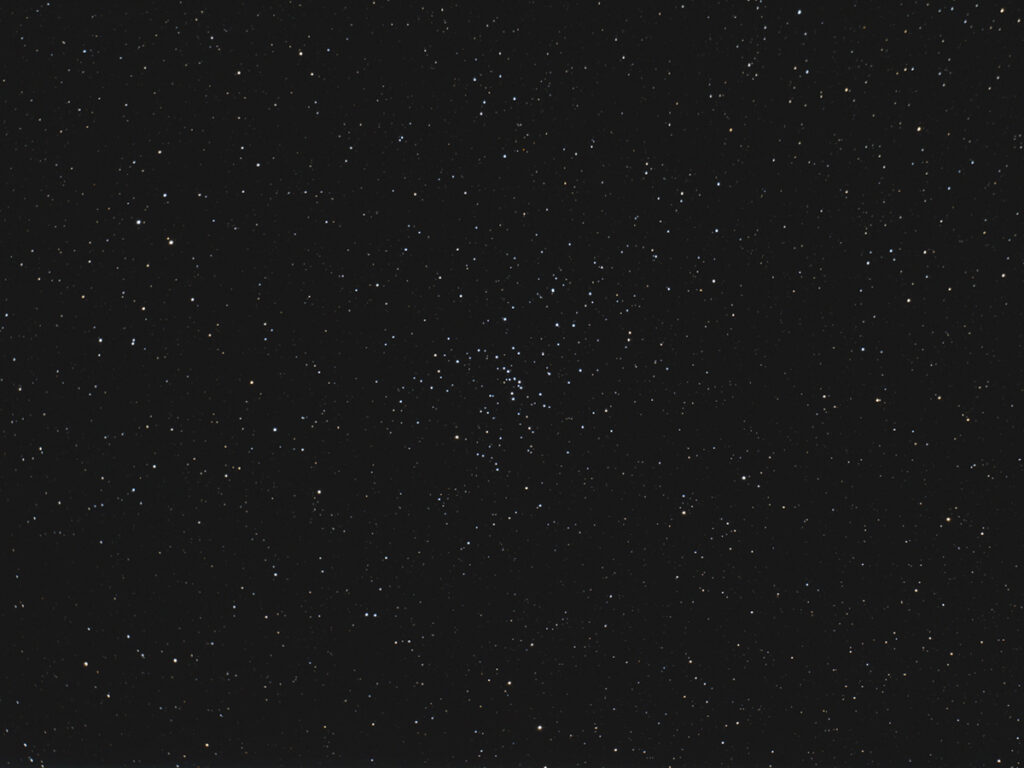
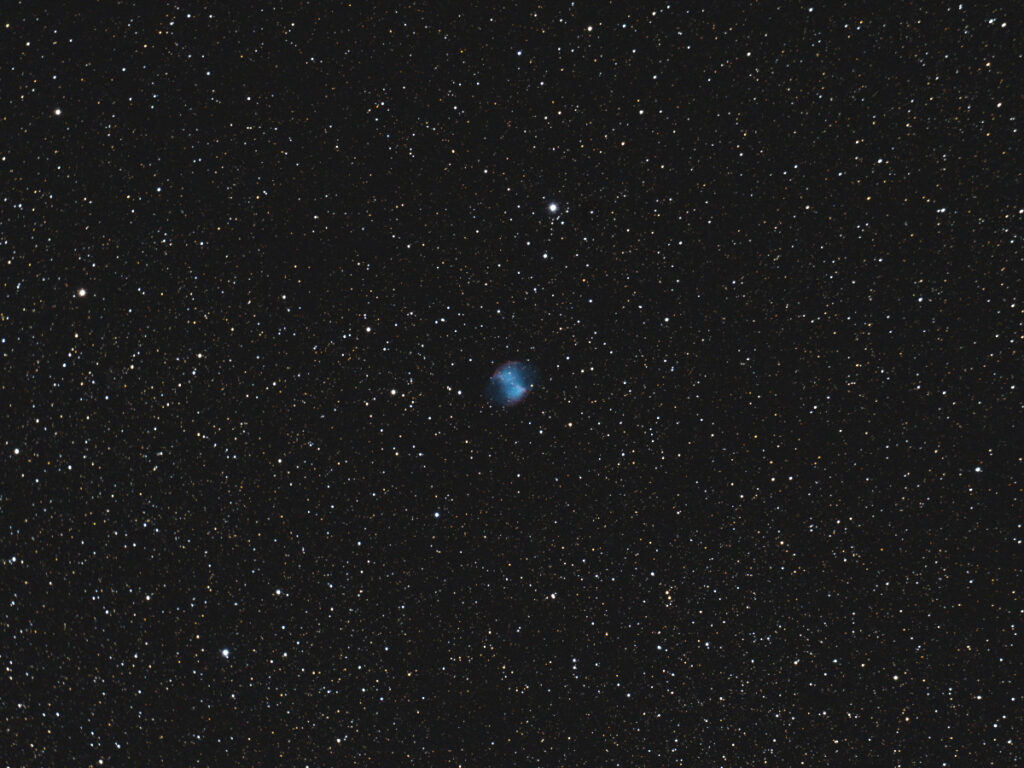
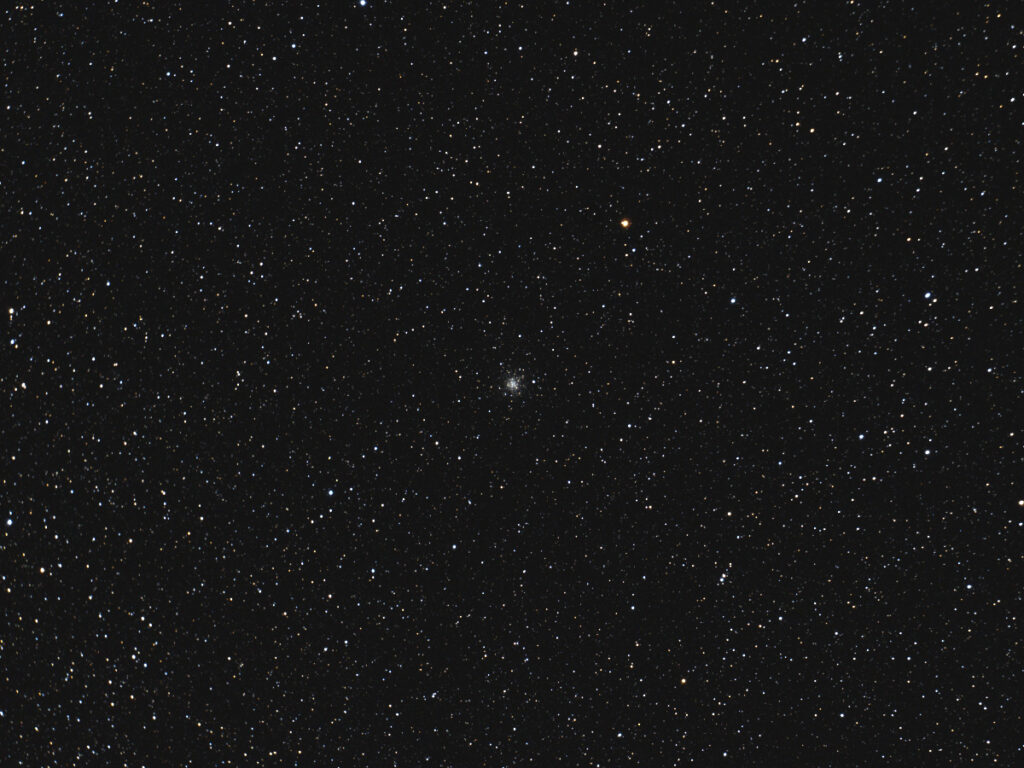
Recent Comments